Xishuangbanna, an autonomous prefecture in the extreme south of Yunnan Province bordering both Myanmar and Laos, is a tropical utopia, home to a uniquely diverse cross-section of ethnic minority groups; the region's distinct culture pervades everything from the spoken dialect and herb-forward cuisine to the ornamental architecture, picturesque scenery and slow pace of daily life.

The region is nicknamed the 'Little Chinese Thailand' for its cultural and architectural heritage owed to the Dai ethnic group, who make up roughly a third of the region’s population.
Another third is a mix of minority groups – Lisu, Hani, Yao, Aini, Bulang, and many other smaller sub-groups, with only a third Han Chinese, despite accounting for 92% of China’s entire population.

Xishuangbanna experiences a year-round tropical climate, and is home to one of China’s only two tropical forests – the other of which is on the island of Hainan.
This biologically diverse forest provides a place of residence for numerous plants, insects and animal species, in addition to flora and fauna that flourish around the Mekong River – known in the area as the Lancang River – which crosses the entire prefecture.
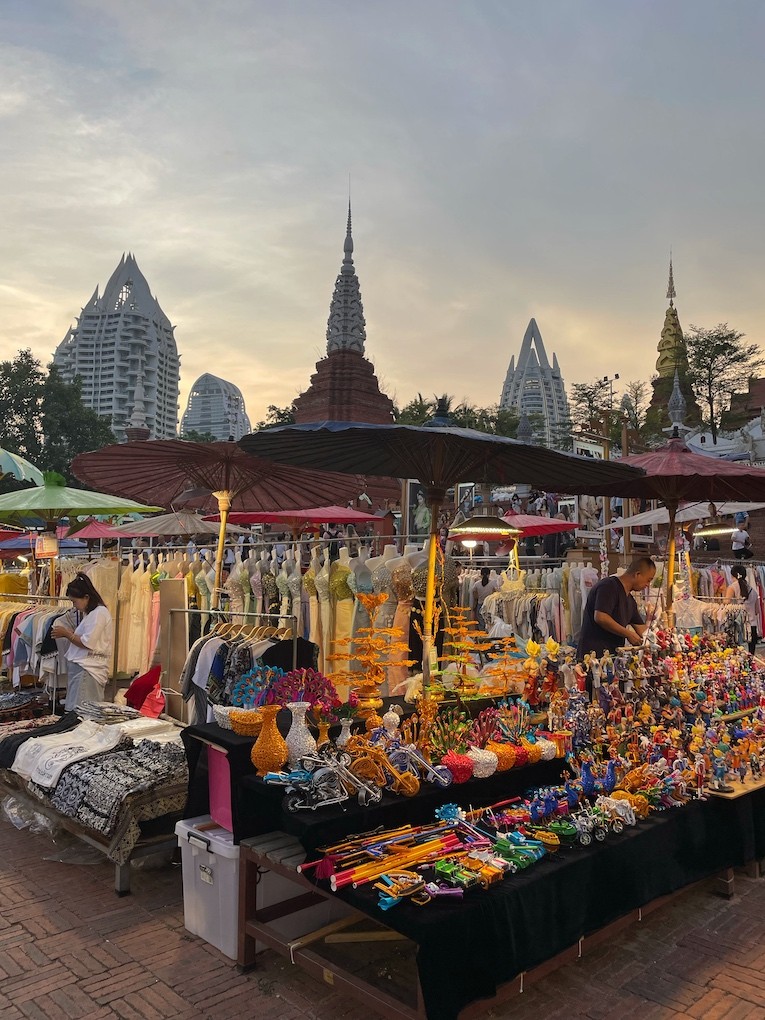
The Chinese name for the region, Xishuangbanna, is derived from the Thai name, Sipsong Panna, meaning '12,000 rice fields.'
Disclaimer: Visitors arriving to Xishuangbanna looking to scratch that Thailand itch might find themselves disappointed; while Xishuangbanna shares similarities to Northern Thailand, the tourism industry is less developed than that of 'The Land of Smiles.'
That’s not to say that a trip to Xishuangbanna is inferior; it’s just a completely different experience than Thailand and shouldn’t be directly compared.

That said, visitors to Xishuangbanna are afforded the opportunity to experience a side of China that exists nowhere else – one with a distinctly Southeast Asian feel – while still being able to communicate in Mandarin, pay in renminbi, and find information using Chinese apps like Dianping and Xiaohongshu.

Outside of the common tourist hotspots that can be read about on many a travel blog – Xishuangbanna Tropical Botanical Garden, Manting Park, Jinghong Wild Elephant Valley, Mengle Temple, and Dajin Pagoda, to name a few – we chose to explore some of the lesser-known parts of 'Banna, to get outside of the touristy hubbub and experience the region more up close and personal.
Here is a smattering of our suggestions...
Temples
Zongfo Temple 总佛寺
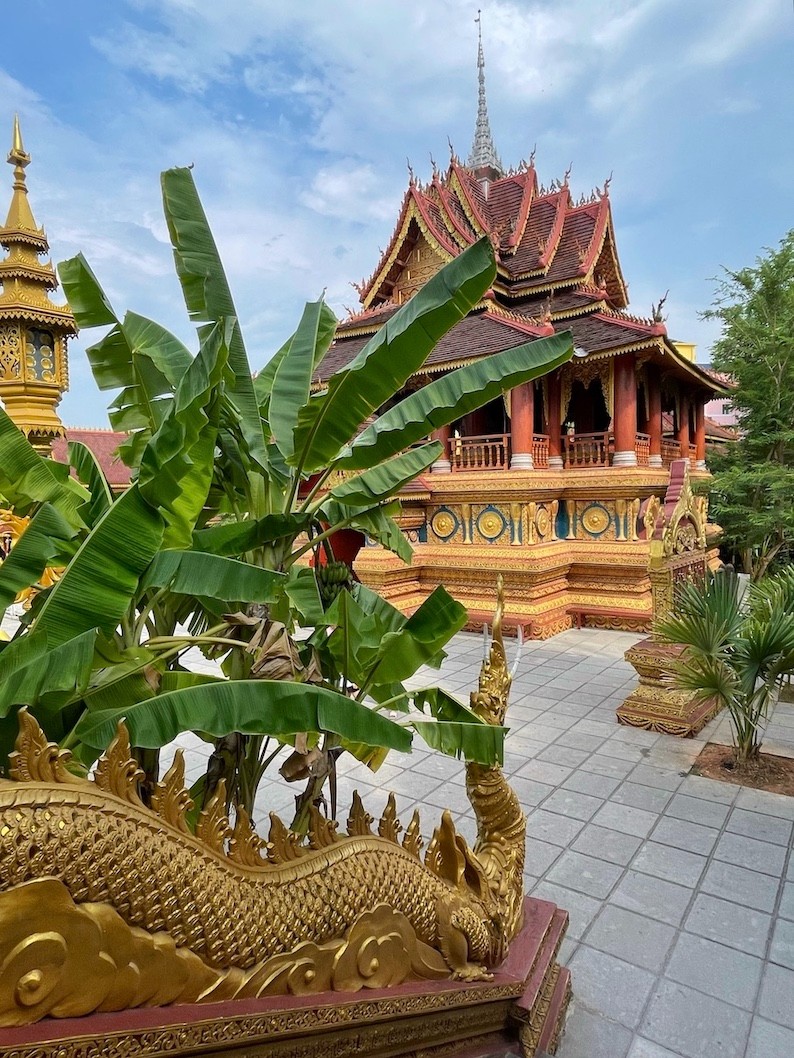
Right next to Manting Park, the Zongfo Temple is a center for Hinayana Buddhists to pray at the oldest temple in Xishuangbanna.
First built in 615 AD by two monks from Myanmar, this temple has been rebuilt five times, and is now recognized as the grandest temple of the area.

The temple houses numerous Buddha statues, multiple pavilions, an ancient Bodhi tree – a symbol of friendship between Thailand and China – as well as many scriptures.
Bonus: Entrance is free.
Dajin Pagoda 大金塔

Situated in the center of town, the Dajin Pagoda is hard to miss – a focal point of the famed Gaozhuang Night Market.
During the day, visitors can pay their respects outside the temple, entering along the main road. All visitors must be dressed appropriately – no exposed shoulders or thighs permitted.
The frontside of the temple is royal blue with ornate sculptures, reminiscent of Wat Rong Suea Ten (or the Blue Temple) in Chiang Rai, Thailand, while the backside looms over the night market area, lit up in the evening, in all its glory.
Once again, entrance is free.
Boresi Temple 般若寺
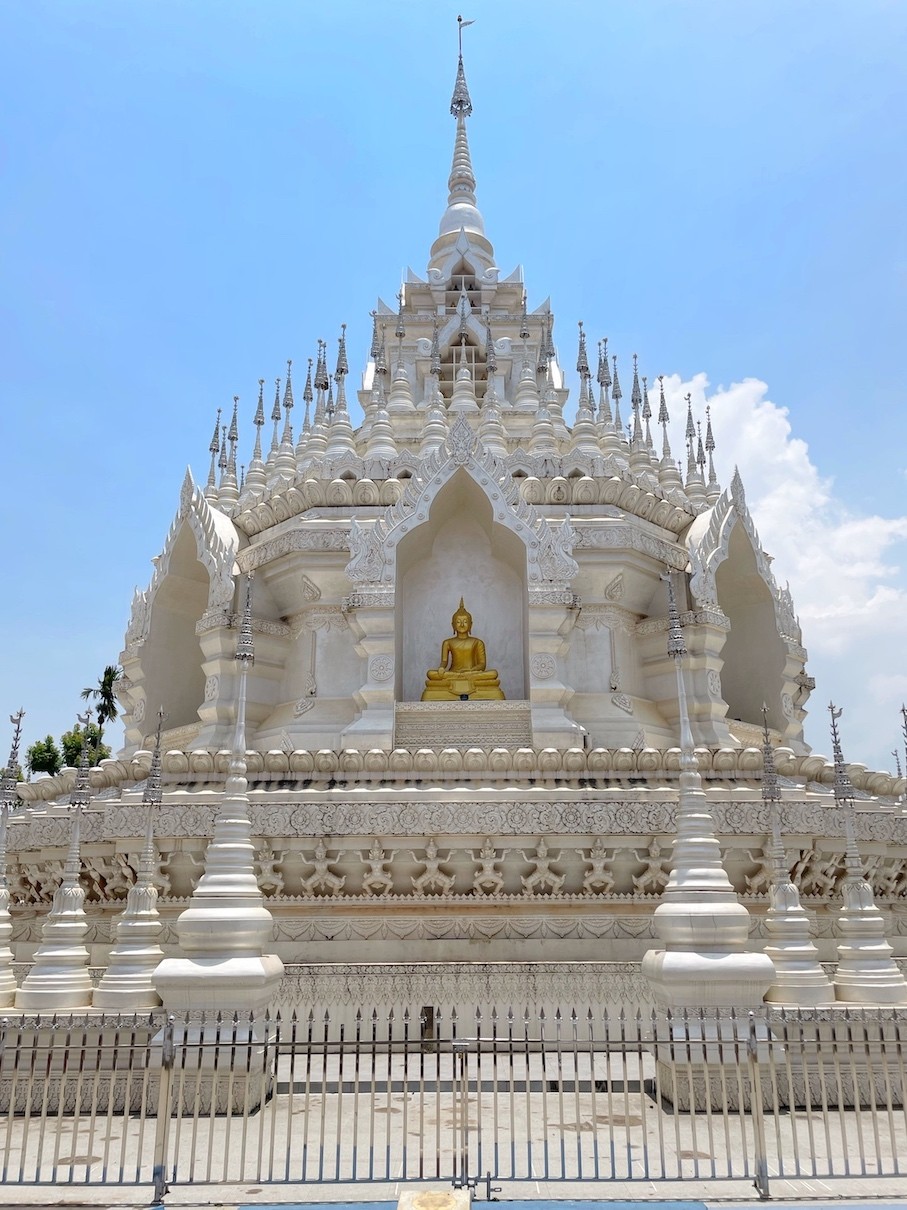
The Boresi Temple is situated just south of the city and (again) offers free entrance to visitors.
In the 7th century, Buddhism was spread from India to Southern Thailand, Cambodia, Myanmar and into Southern China to the Dai and Shilang ethnic minority groups of Xishuangbanna.
This temple was originally built in 833AD during this Buddhist migration, and has since been reconstructed five times, most recently in 2014.
The temple itself is a protected religious site as it is still active, with Buddhist monks living and praying in the nearby monastery.
Mandou Buddha Temple 曼斗佛寺

A smaller version of the Zongfo Temple, the Mandou Buddha Temple is relatively quiet, set back from a food stall-filled road next to downtown.
We suggest visiting at sunset... and you may just be lucky enough to have the entire complex to yourself.
Markets
Local Bazaar 集贸市场

The main local bazaar (集贸市场) is a combination of a wet market – fresh produce and proteins – snacks market, traditional minority clothing market, and local products market all rolled up into one, spread across a few buildings on Mengla Lu.
Our favorite aspect of this market is the Dai fabric and clothing market (傣族服装), an explosion of colors and textures that represent many of the traditional attire of the 13 minority groups that make up Xishuangbanna’s population.

While the downtown area of the city has many clothing stores geared specifically towards tourists, this market is more authentic, with the fabric sourced directly from outlying villages.
Many of the garments are pre-sewn, but we suggest going on one of your first days in Xishuangbanna so you have time to get your selections tailored or any items sewn to your liking.
From Hani wedding costumes to traditional Dai festival wear, the pieces sold here make for stellar souvenirs and gifts.
Jinghong Farmer’s Market 景洪农货市场
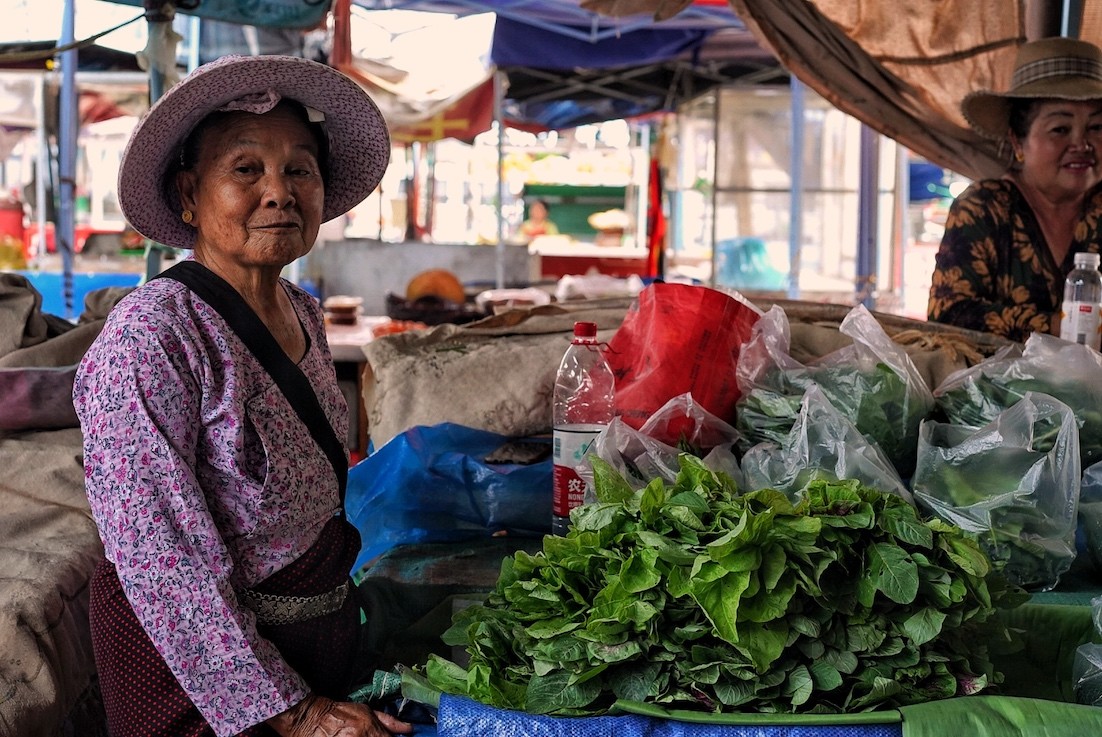
Taking place daily from 4-7pm in Manmai village (曼迈村) just a 20-minute drive from downtown, this Dai minority market is a lively food and wet market for both prepared food and produce.
Sample your way through local Dai treats while engaging with the villagers going about their daily shopping.
Mandui Fruit Market 曼丢傣家古镇
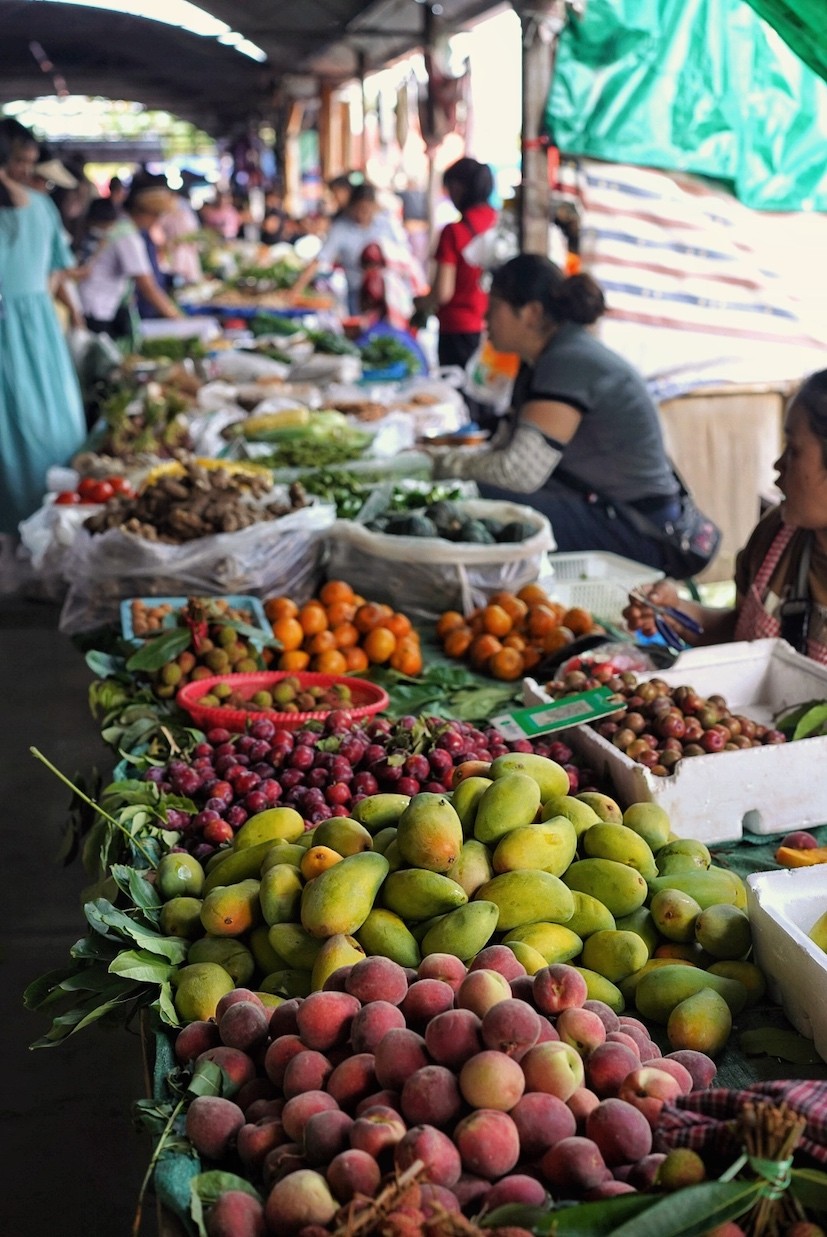
In the village of Mandui, there’s a small dried and fresh fruit market, as well as a few other snack and handicraft stalls every morning, right at the town entrance.
Xishuangbanna fruit is famous for good reason – a superlative rendition of the grocery store staples found in most cities, as the fruit diversity and abundance are unmatched in China.
Visitors here can sample seasonal fruits, with everything from plump mangoes, juicy pineapples, sweet mangosteen, and bursting lychee to velvety egg fruit, tart baby pitaya, and saccharine tianxinguo, or sweetheart fruit.
Man Ge Wholesale Fruit Market 曼阁市场水果批发市场
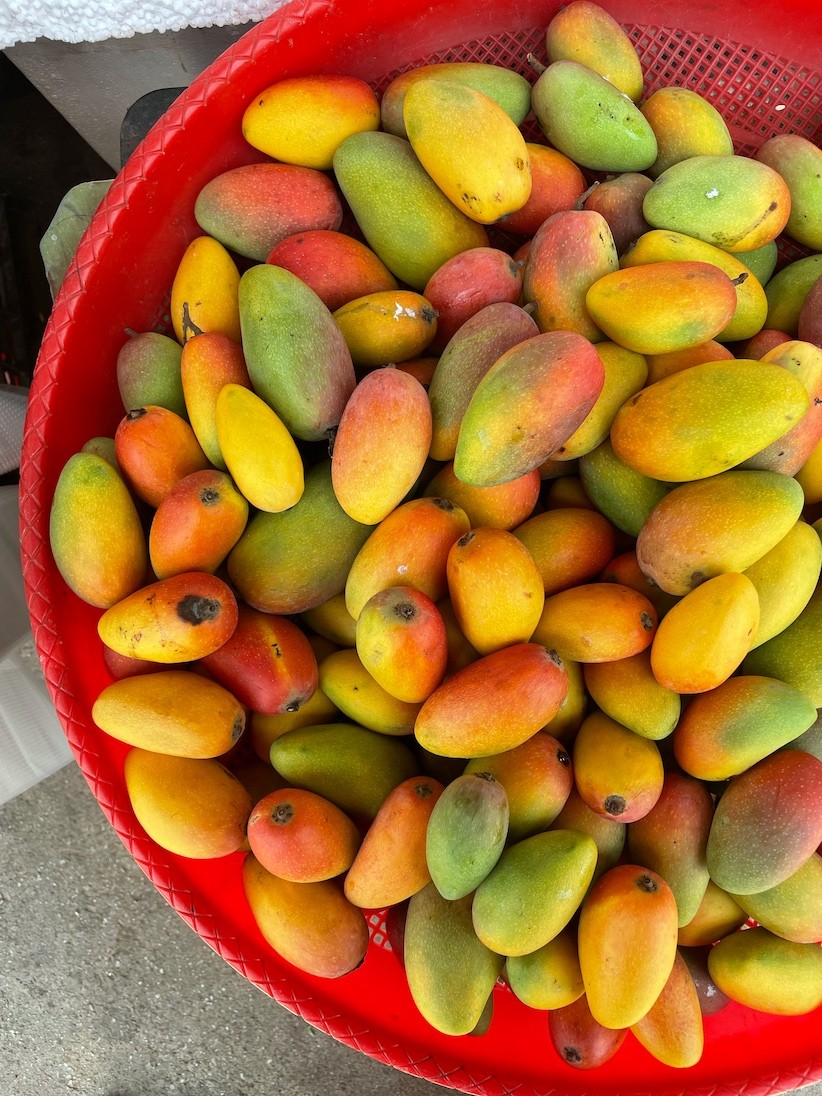
Continuing on a fruit consumption quest, this wholesale fruit market is not only a great place to taste and takeaway many fruit varieties, but it’s also a fantastic spot to experience the local city culture of Xishuangbanna.
This wholesale market is a place for many smaller markets and restaurants to stock up, making it a bustling site of business that showcases the energy of Xishuangbanna’s people.
The market also offers dried fruits, pre-packaged snacks, tea, coffee and other regional products, making it a great place to gather gifts to bring home.
Riverside Night Market 江边夜场
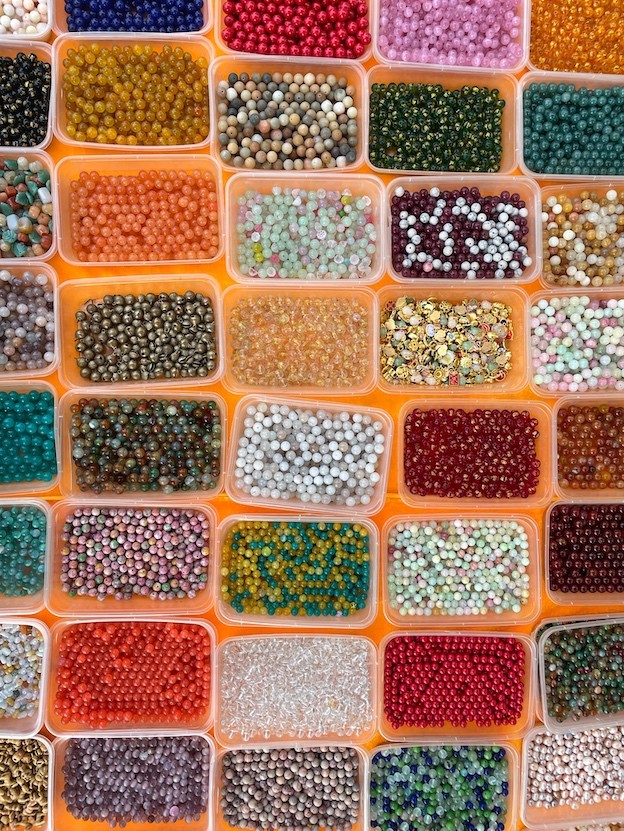
Most will guide visitors to the famous Gaozhuang Night Market, located on the east bank of the Lancang River in the center of Jinghong – a more than one-square kilometer market that takes place nightly between 6-10pm.
However, the less touristy alternative is the Riverside Night Market ( 江边夜场), a narrow local market that lines the west side of the Lancang River.

Starting nightly around 7.30pm, this market does offer a lot of the same local foods, handicrafts and curio items for sale as the Gaozhuang Market, but at more affordable prices and in a more relaxed setting.
Both share a similar feel with Thailand night markets, but the Gaozhuang market has more of the mass-produced Chinese trinkets, more commonplace Chinese market snacks and a lot more sensory overload.
The Gaozhuang market, however, is worthwhile to see the Big Golden Pagoda (大金塔) all lit up from the backside, a focal point of Xishuangbanna's downtown.
Restaurants
Chun Mei Restaurant 椿楣粉档

On the edge of the Gaozhuang Night Market, Chun Mei is a casual eatery focusing on Thai-influenced flavors.
Think yellow curry with chicken – a play on Chiang Mai khao soi – salt-grilled fish, rice noodle soup, BBQ skewers, and our favorite papaya salad in all of Xishuangbanna.
Prices are very reasonable, but expect long waits during peak times.
Mamalao 老挝烤肉糯米饭
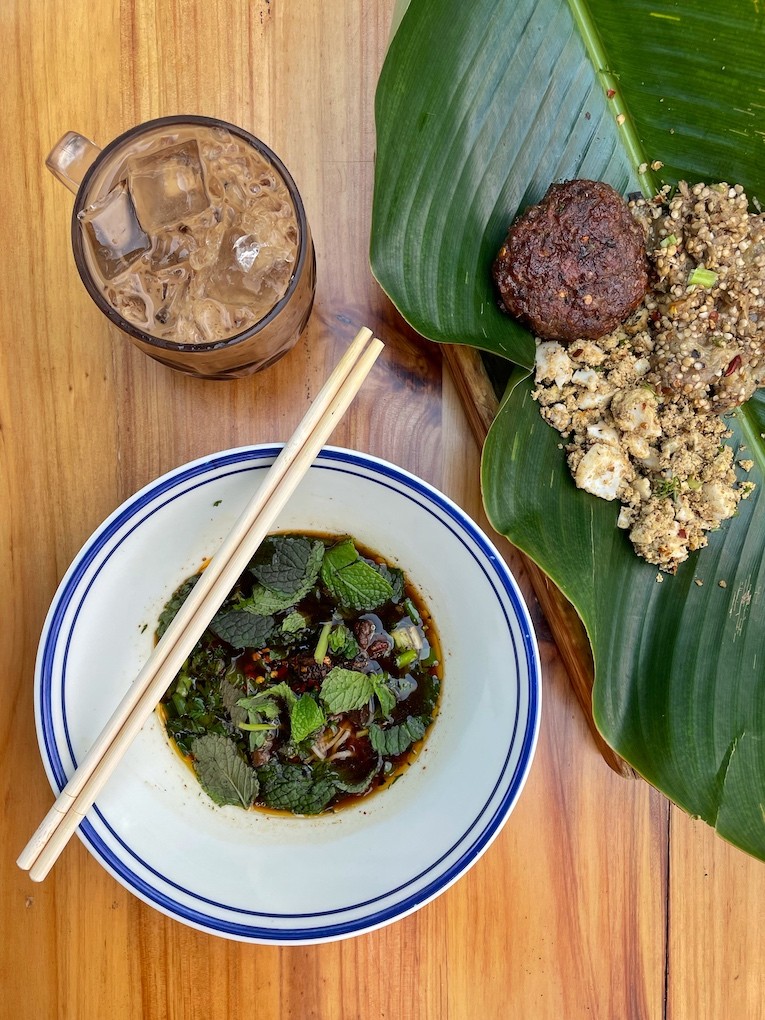
This Dai style breakfast joint is a pocket-friendly and authentic way to sample a myriad of Dai traditional dishes in a buffet format.
The menu varies daily, but expect herb-forward meat salads, smoky grilled and pounded eggplant salad, fire-roasted meats, sticky rice, mixian rice noodle soup, and milky Thai-style pulled coffee.
Just order a portion of whichever dishes you prefer – most ranging in price from RMB2-8 each – and build your own Dai breakfast plate.
Note: Mamalao closes daily around noon, so arrange your morning plans accordingly.
Chun Wu Li 春武里
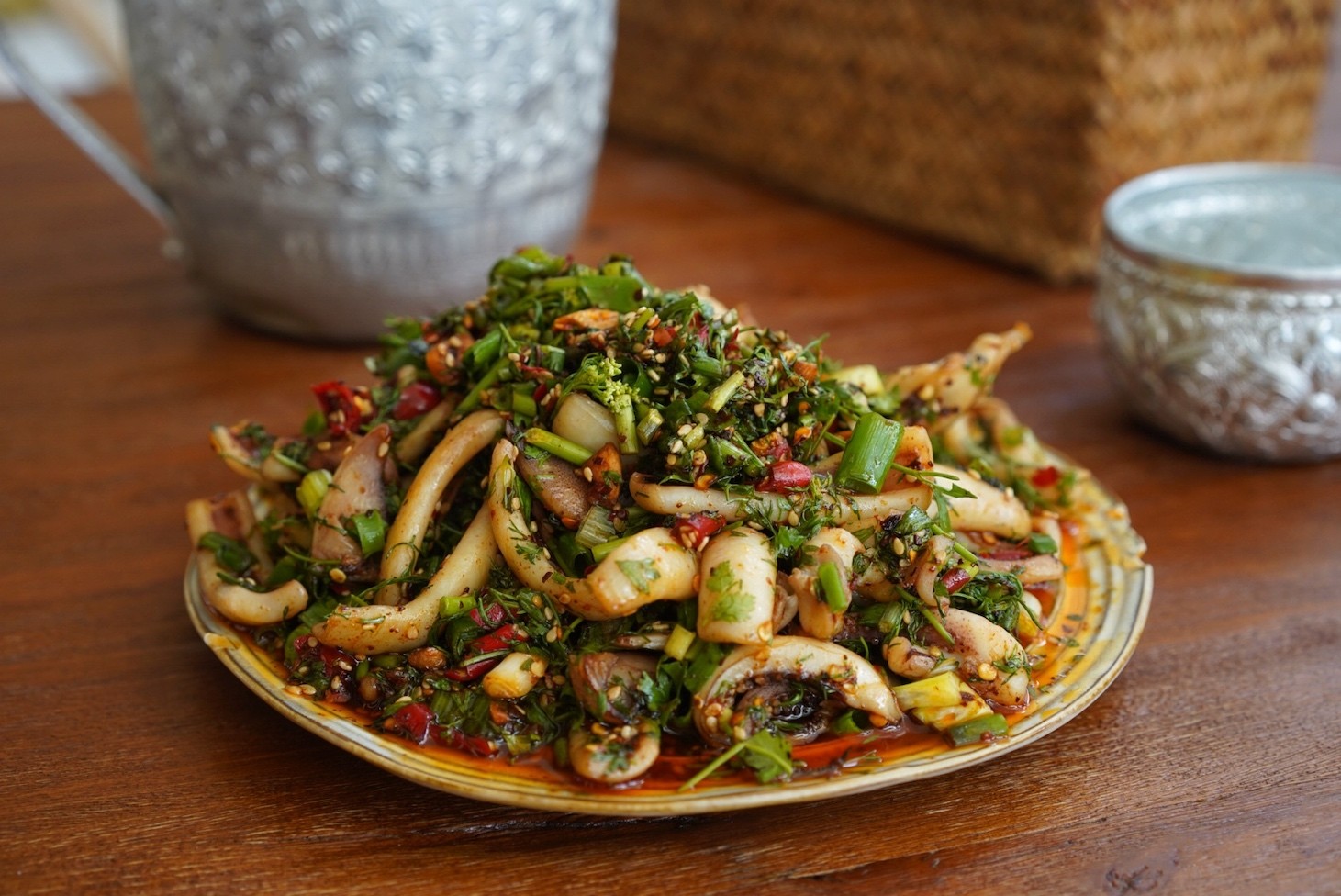
A popular spot among Chinese netizens for its tropical garden setting and Instagrammable food presentation, Chun Wu Li is a centrally-located venue ideal for sampling flavors of the region.
A creative mix of Thai, Dai and fusion Chinese dishes are on offer, like Thai-spiced fried chicken wings with lemon and sugar, tom yum soup, chili oil and herb wok-fried squid, grilled seafood platters, mango sticky rice, and a tasting trio of Thai teas and coffee.
Other Sites
Dai Xiang Water Village 傣鄉水城

Less of a village and more of a park, the river is lined by several temples built in the Dai style, surrounded by lush plants.
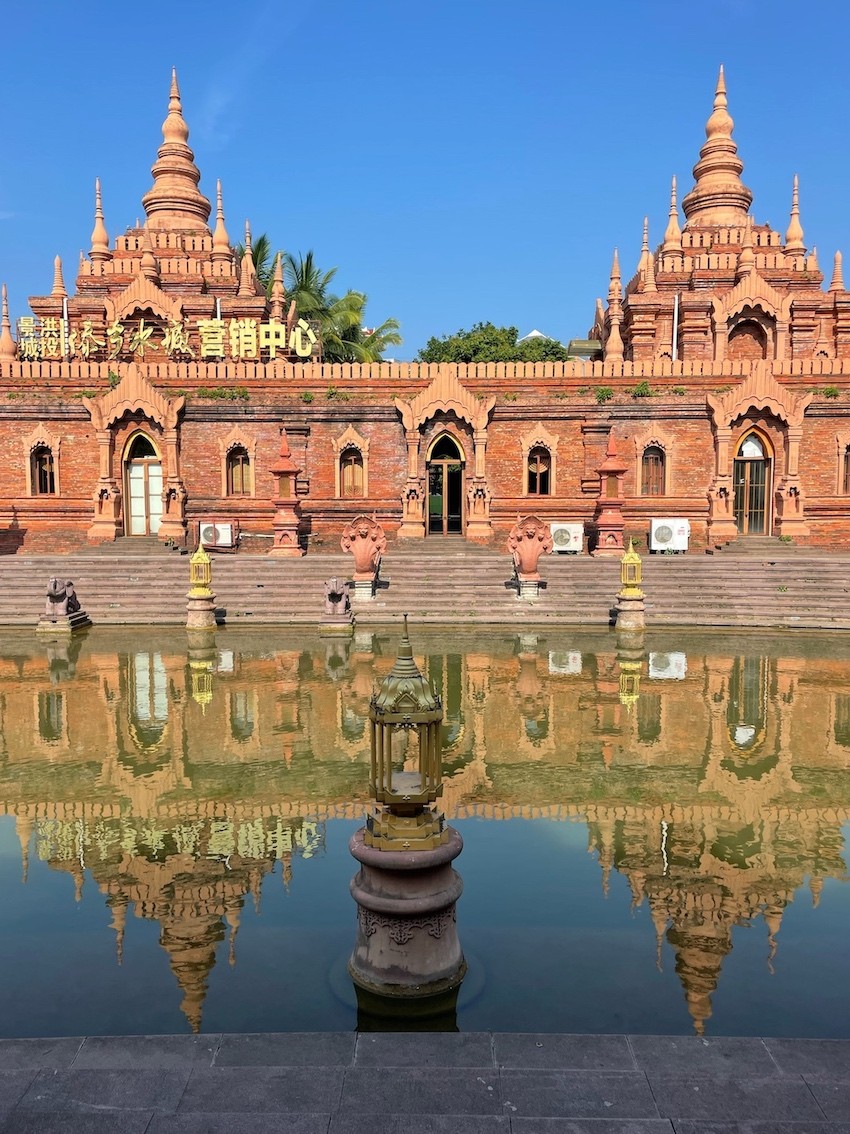
The calm water reflects the surrounding architecture, kindling a sense of being surrounded by the natural elements of Xishuangbanna, making it the perfect place for a stroll in the evenings.
Sipsongpanna Bridge 西双版纳大桥

The main bridge connecting the east and west sides of the Lancang River banks, the Sipsongpanna Bridge is more than just a thoroughfare for traffic; around dusk each day, the bridge becomes a common spot for evening walks to take in the vibrant, tropical sunset views.
Jinghong River Walk

While Xishuangbanna is chalk full of scenic spots, one of the most serene and easily accessible is the pedestrian area along the Lancang River, a developed space on the east side of the water, near the Gaozhuang Night Market.
While the area is flush with sunshine during the day, the pleasant breeze in the evening makes it a relaxing spot to unwind after a long day of sightseeing.
How To Get There
The capital prefecture of Jinghong is home to the region’s main airport – Xishuangbanna Gasa International Airport (JHG) – with regularly scheduled daily flights to and from 45 major cities within China. The only direct international flight in and out of Jinghong’s airport is to Chiang Mai, Thailand.
Jinghong also has its own high-speed railway station that connects to nearby cities. The closest main transport hub is Kunming – the capital city of Yunnan Province – where travelers can arrive within 3-4 hours, with 25 high speed trains running per day between the two cities.
From Kunming, travelers can more easily connect to other domestic and international destinations.
[All imges by Sophie Steiner/That's]
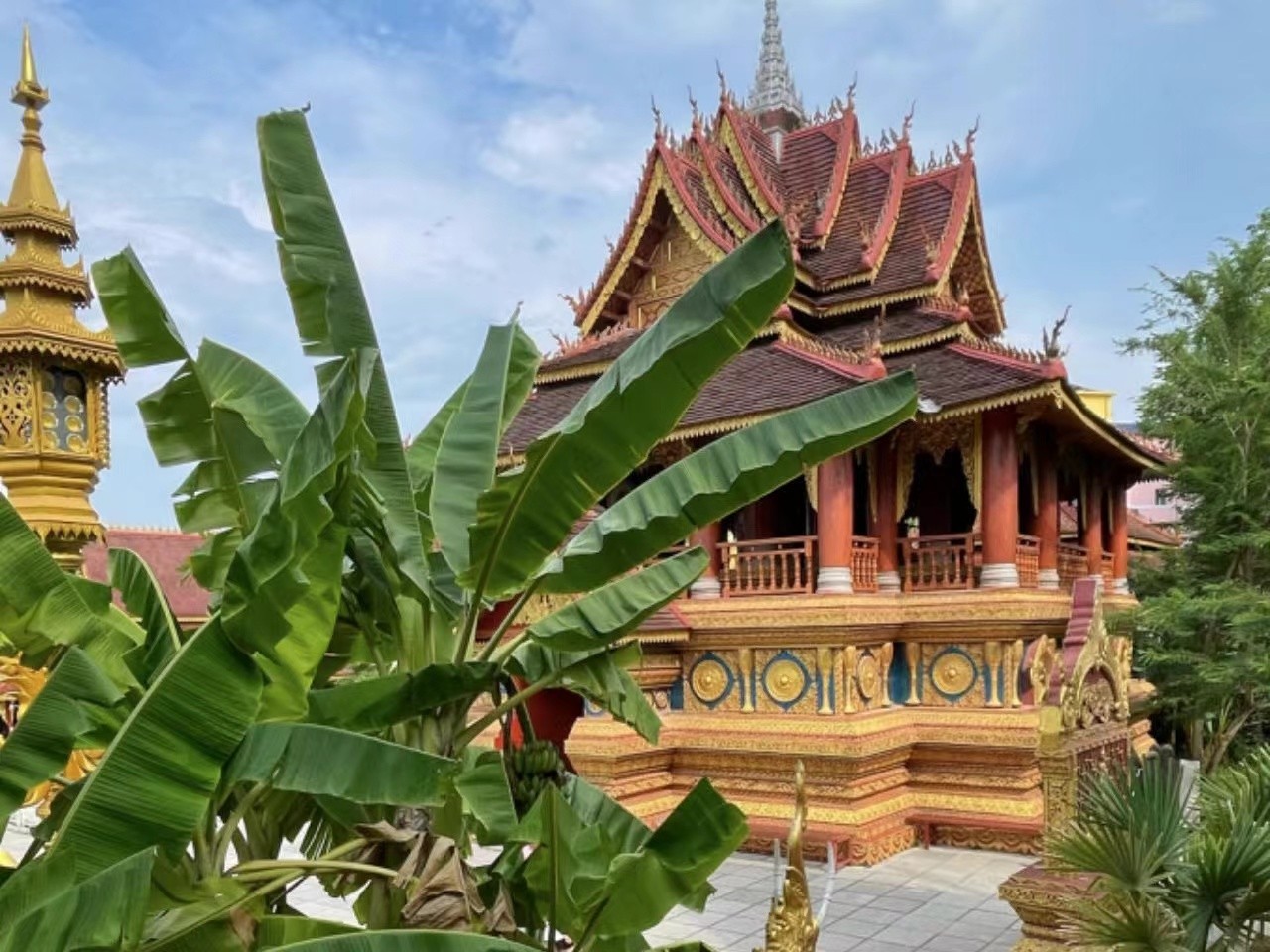





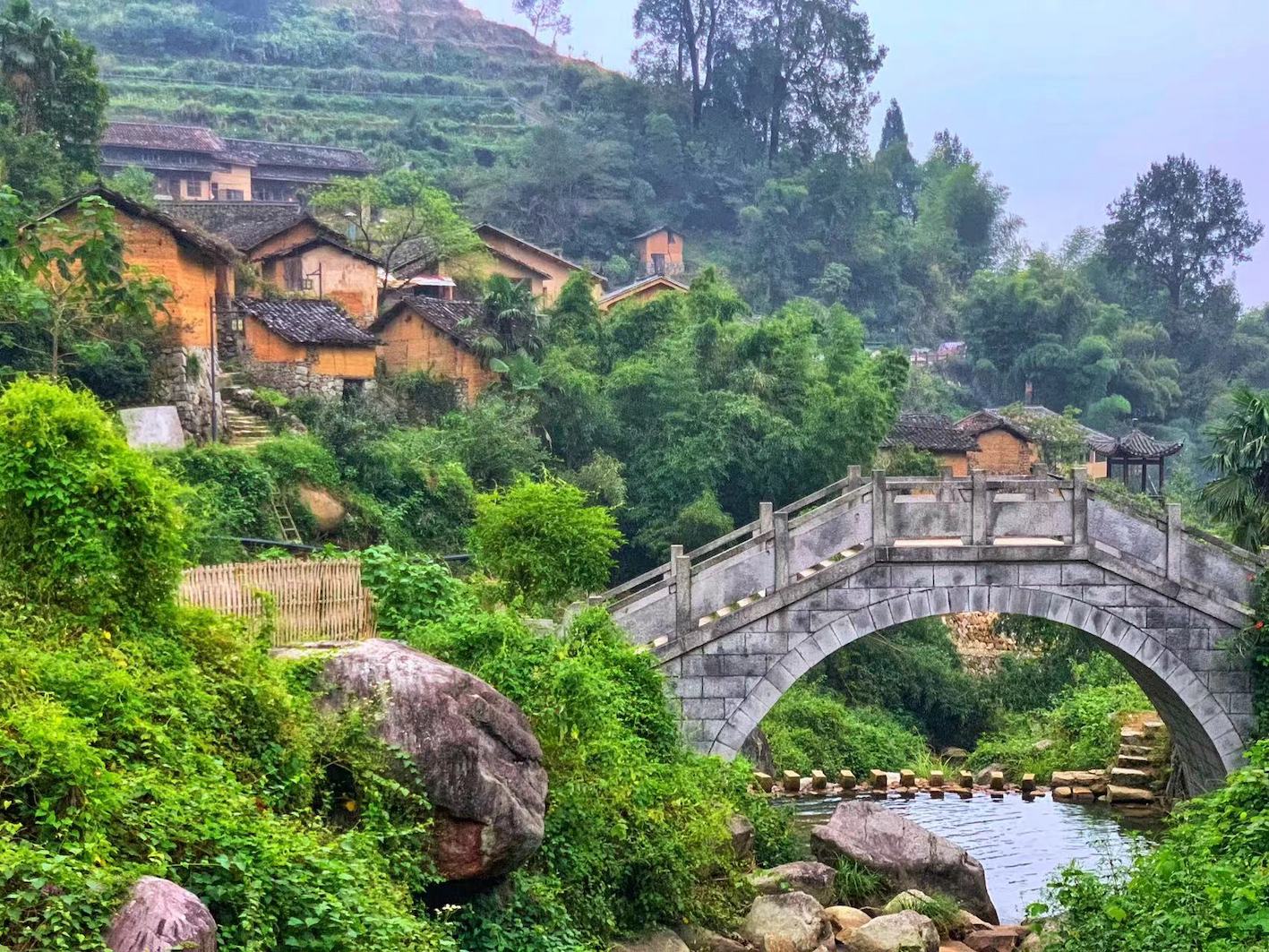















0 User Comments